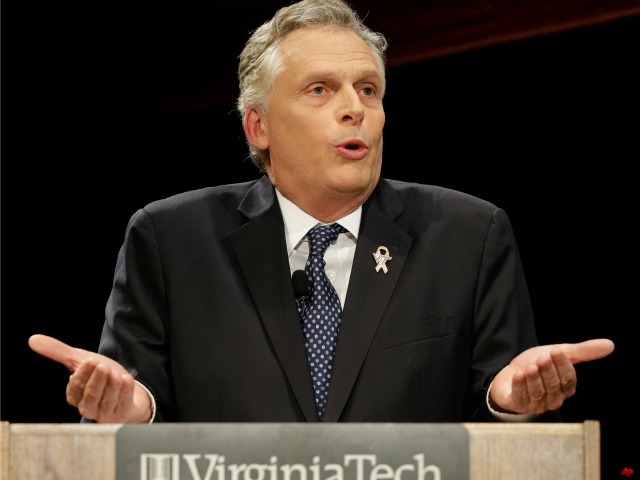
On the eve of the Virginia elections, months of campaigning now hinge on voter turnout. Odd-year elections have much lower turnout than presidential years, making it difficult to predict the outcome with precision. UVA’s Center for Virginia Politics expects turnout to be higher this year than in 2009, when the Republican candidate won a 17-point landslide. Such a turnout, however, would reverse a nearly 30 year historical trend in the Commonwealth. Nothing in recent polls, moreover, suggests that such an outcome is likely.
In six gubernatorial elections over the past 24 years, voter turnout has always been lower than the previous election. In 1989, over 66% of voters in Virginia turned out that year. Every election since has witnessed a steady drop in voter participation. In the last election, in 2009, just over 40% of Virginia voters went to the polls. Some political observers expect turnout this year in the mid-30s.
If that is the case, then the race for Governor is a lot more competitive that many observers assume. A senior strategist told Breitbart News that Democrat Terry McAuliffe’s campaign is basing its strategy on a turnout of around 45%, the same as 2005 when Democrat Tim Kaine narrowly won office. If turnout is under 40%, however, Cuccinelli’s chances of victory increase, as the electorate becomes marginally more conservative.
A challenge for McAuliffe and Cuccinelli is that both candidates have very high negative ratings. Much of this is a reflection of the overwhelmingly negative attack ads aired by both campaigns. Negative ratings for both candidates are higher than the positive ratings. That makes energizing voters and getting them to the polls a challenge for any campaign.
While Cuccinelli has made course corrections in his campaign to increase turnout of his voters, there is no obvious reason why soft-Democrats would turn out for McAuliffe.
Democrats clearly recognize this. In the final days of the campaign, McAuliffe has appeared at events with Vice-President Joe Biden, DNC Chair Rep. Debbie Wasserman Schultz and President Obama. The decision to campaign with Obama is risky, as it occurs in the middle of a disastrous rollout of ObamaCare, but McAuliffe really has no choice. His campaign is clearly worried about turning out their base voters.
In the final Quinnipiac poll of the race, one-third of McAuliffe’s voters said they supported him because they were “against” Cuccinelli. Just 39% of his supporters said they “strongly favor” him. Among Cuccinelli voters, 54% said they “strong favor” him.
In other words, those supporting Cuccinelli are the most likely to turn out. Throughout the campaign, Cuccinelli has struggled to unite his base. In the closing days, however, he has framed the election as a referendum on ObamaCare. Obama’s appearance on behalf of McAuliffe made that argument more compelling.
McAuliffe has the edge in the head-to-head polls. He is to some respects, however, running against history. If the turnout trend continues its long-term downward trend, it could be a very long election night.

COMMENTS
Please let us know if you're having issues with commenting.